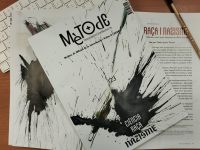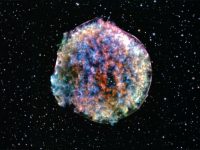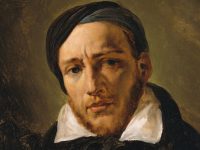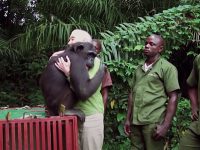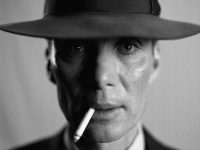Jorge Wagensberg, trespassing thinker and indefatigable conversationalist
Portrait of a master of scientific aphorisms
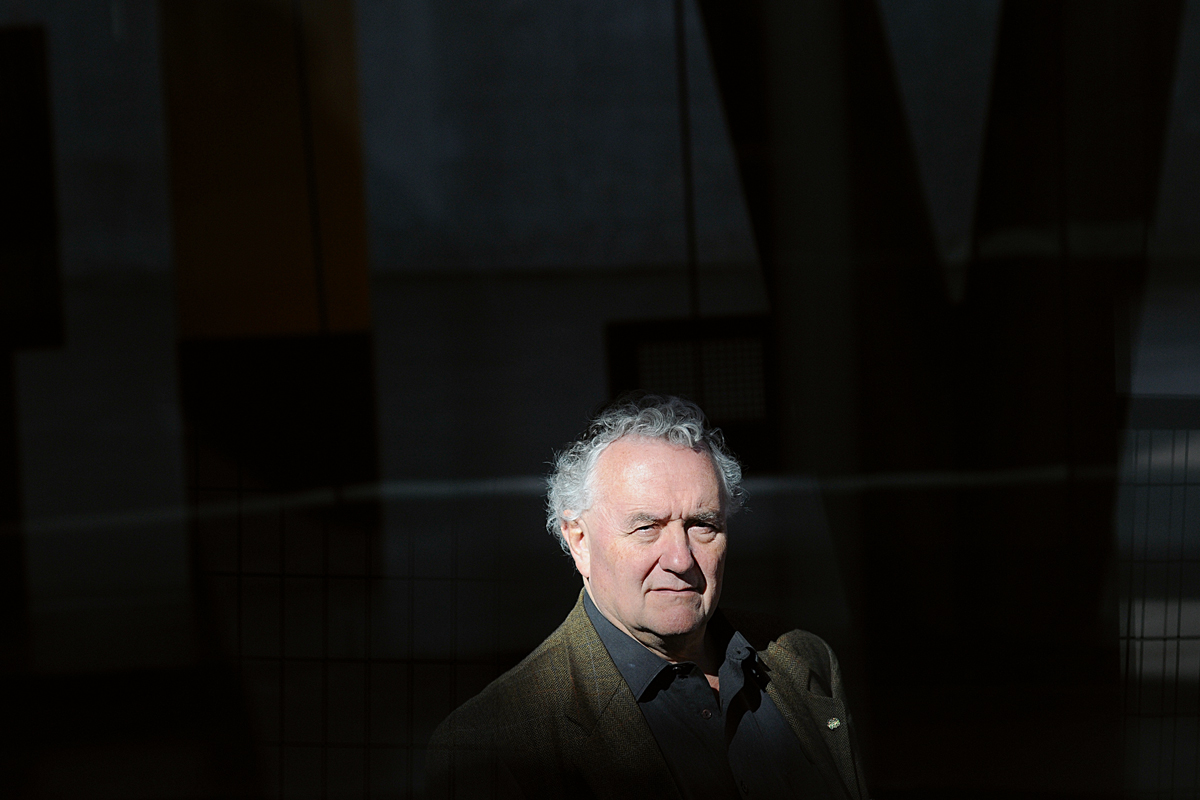
Educated as a physicist, but also an excellent writer, communicator and science columnist, inveterate traveller, museologist, foodie… Jorge Wagensberg Lubinski (Barcelona, 2 December 1948 – Barcelona, 3 March 2018) used to wear many hats and they all looked good on him. But the one that stood out above all the others was that of conversationalist. He was passionate about conversation, he never got tired of cultivating words. He conceived and expressed ideas and dreams through conversation. He was the embryo, the origin of any initiative he undertook. Wagensberg debated and reasoned before he acted: if the conclusion we reach is worthwhile, we will eventually try to carry it out. Talking is conceiving and making plans, it is sharing before reality shows up. It is the moment in which we are really free and that enlarge our spirit. As François de La Rochefoucauld, aristocrat, writer, and French moralist, wrote in his best work, Maximes, knowing how to listen and how to respond is one of the greatest perfections in the human conduct. Jorge Wagensberg most probably shared it.
«The value and importance of questions is a constant in Jorge Wagensberg’s thinking and work»
In fact, his first book, Nosotros y la ciencia (“science and us”) – edited by Antoni Bosch in 1980 – is a set of conversations/interviews with fourteen prominent scientists. Ramon Margalef, Joan Oró, Ilya Progogine, or Francisco Grande Covián, among others. In the introduction, Wagensberg wrote: «After attending scientific lessons and after eight years dedicated to science, I have felt the need to organise my ideas in some way. And I have chosen the easiest and most direct way: asking. Indeed, verbal questions almost always replace the hard work. I do not mind confessing that, since I made this small discovery, I practice questioning way too much. […] I am interested in the scientific issues that scientists always think about, but do not always write about spontaneously. Questioning can force the situation».
The value and importance of questions is a constant in Wagensberg’s thinking and work. Questions are an open door to intruding thought, to critical looks, to the surprise that shakes the intellect.
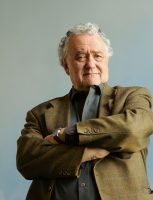
Jorge Wagensberg was an atypical professor and researcher, with little interest in making a traditional scientific career. In fact, he never adapted to the game rules of the academic world and gained more recognition outside than within the academic world. / Tusquet Editors
In this first book, Wagensberg added a series of reflections on the idea of progress and evolution, on environmental issues, on the limits of the human mind, on music, and also on Spanish research practice, in which he would delve deeper throughout his intellectual and vital career and which he developed in several works.
Early life and the discovery of science
Jorge Wagensberg, curious and restless since childhood – someone irresponsibly label him as hyperactive today – began to love science reading an adventure book: The Kon-Tiki expedition: By raft across the South Seas, a work by the Norwegian ethnologist Thor Heyerdahl, in which the author described who were the first settlers of the Pacific islands. He argued that Polynesia was colonised from America and he built a boat to emulate the trip. Years later, genetic studies disproved Heyerdahl’s hypothesis.
Travel and adventure have historically been very linked to scientific enterprise. Let us think of Charles Darwin, Jane Goodall, Jordi Sabater Pi, Howard Carter, or Mary Leakey, among many others. Years later, in a different way, as a museologist, Wagensberg emulated the great explorers and travellers during his stays in the Amazon and in many other places in the world.
Wagensberg’s parents left Poland not for the pleasure of travelling. On the contrary, they ran away from the xenophobic atmosphere against the Jews that was in the air in the Poland of the 1930s, and they settled in Barcelona. They saved themselves from World War II and the Holocaust, but they suffered the Spanish Civil War.
His father had the skills of an inventor. He founded a company that manufactured very innovative bags in the 1940s. The spirit of his father, who always brooded over the things he made to try to improve them, marked the character of the son. Jorge Wagensberg was born in 1948 at the Santa Eulàlia clinic, in the district of Sarrià – Sant Gervasi in Barcelona, now torn down. His autobiographical book Algunos años después (“some years later”, 2014), in which he reviews his childhood and youth, starts with a juicy anecdote: «I was born in the early hours of Wednesday 2 December of 1948 in Barcelona, at a clinic where the streets of Ganduxer and Modolell converge at a narrow angle. The doctor programmed my birth so he did not miss Rigoletto by Giuseppe Verdi, which was being played that night at the Gran Teatre del Liceu, so I was greeted to this world by a man who was dressed up for a gala and wearing a bow tie». Not everyone can claim to have been accompanied by a doctor who loved opera in a tuxedo when they were born. The newborn Jorge showed promise already!
Schools in 1950s Spain were mainly oppressive, with strict discipline, and talking in class was almost a sin. Wagensberg’s parents, members of the Jewish community of Barcelona, enrolled him in the Swiss School of Barcelona, where the subject of religion was optional, conversation and critical thinking were encouraged, and at least four languages were learned. He attended high school in the Lycée Français de Barcelone, ran with an iron fist by the great pedagogue Pere Ribera, then promoter of the Aula Escola Europea. In the book Algunos años después, Wagensberg recalls some phrases Ribera said in the classroom – «Neolithic man went from hunter to making porridge», for example – that made his appreciation and obsession with aphorisms, the most scientific literary genre, grow. In fact, many of Ribera’s metaphors about history inspired Wagensberg’s way of explaining as a museologist.
Physics education and an atypical scholar
Reading the book The Kon-Tiki expedition: By raft across the South Seas by the Norwegian Thor Heyerdahl arose Wagensberg’s interest in biology, anthropology, geography, epistemology, traditional cultures… and it also made him reach the conclusion that science is, in some way, a fiction of reality.
In an interview in El País, published on 9 May 2014, Wagensberg recalls that at first mathematics and its form of reasoning attracted him, but that he later decided on physics, which he defined as «colourful mathematics».
«Wagensberg understood education as a path to the admiration of the world, always including a critical eye»
He studied physics at the University of Barcelona, where he graduated in 1971. While preparing his PhD, he began his teaching activity as pre-tenured lecturer of the Department of Thermal Sciences. In 1981, he became tenured university professor of Theory of the Irreversible Processes of the Department of Fundamental Physics of the University of Barcelona. His lectures transmitted passion and contributed to an interdisciplinary look of physics, which he understood beyond its laws and applications. Science, for Wagensberg, always consisted of wondering about the whys and establishing connections with the different parts of reality. Likewise, when he was a young teacher, he already organised debates and conferences in the classrooms about current scientific and cultural topics. He was also active outside of the academy: on the first and second of November of 1985 he was one of the organisers of the congress «Proceso al azar» (random process) held in the Dalí Theatre-Museum of Figueres. In addition to the painter Dalí, it counted on renowned scientists and philosophers such as René Thom, Ramon Margalef, Ylia Prigogine, or Évry Schatzman, among others. It was a pioneering event in terms of hybridisation between art and science, so recurring today. His friend and film director Gonzalo Herralde recorded the sessions.
Wagensberg’s initiatives and mood turned him into an atypical professor and researcher, interested in much more than his strict sphere of knowledge or making a traditional scientific career. In fact, he never adapted to the game rules of the academic world. Some of his well-known aphorisms reflect it: «The master class in which more than one hundred students attend an exhibition, which they can always read sooner or later, is an educational swindle» or when he wrote unambiguously that «reality is not guilty for study plans which are agreed at schools and universities».
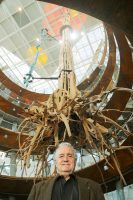
In 1991 Jorge Wagensberg took the lead of the Science Museum of la Caixa Foundation of Barcelona, which would be later renamed as CosmoCaixa. Wagensberg and his team made an author’s museum out of it, where each exhibition was the result of a task of reflection and research. Thanks to this task, the CosmoCaixa is today a world benchmark of museography. In the picture, Jorge Wagensberg with the Acaricuara tree, an example of an Amazonian tree that works at the same time as an exhibition and architectural element at the entrance of the CosmoCaixa. / Tusquet Editors
In fact, he understood education as a path to the admiration of the world, always including a critical eye. He summarised it also in the form of aphorisms: «To educate is to encourage the addiction to intellectual joy»; «Learning has three stages: stimulation, conversation and understanding, and with each one of them there is the opportunity for intellectual joy»; «A good teacher does not hide paradoxes, but looks for them (the best way to start a lecture)»; «Knowledge without criticism is more worrying than criticism without knowledge».
As it often happens to free souls, Wagensberg gained more recognition outside than within the academic world. Sure, in 2010 the University of Lleida invested him honorary doctor, but most of his awards came from other institutions: the National Awards of Catalonia for Thought and Scientific Culture (2005), the Saint George’s Cross of the Government of Catalonia (2007), or the Juan Mari Arzak Journalism Prize for his article «Aproximación a una copa de vino tinto» (approach to a glass of red wine, 2003), among many others.
Communicator and science columnist
Scientific communication is a by-product of science and, therefore, it is conditioned by its social value. In the 1980s, the communication of science was in its infancy, both in Catalonia and Spain. It did not interest scientists – among other things, because it has no curricular value – with a few exceptions. Wagensberg was one of them. Surely, his facet as a communicator and scientific columnist in various media – including his collaborations in Mètode – was one of the most outstanding activities of his professional career.
He was the inspiration for the science pages of the newspaper La Vanguardia, published on Sundays, and a regular contributor of the already extinct science supplement of the publication by the Grupo Godó. He was also an advisor and regular guest to the program Einstein a la platja at Betevé. In one of the programs, dedicated to Einstein, Wagensberg sat on the television studio next to Albert Einstein. It was actually the wax figure from the CosmoCaixa museum, which he agreed to move in a vehicle around Barcelona. The event left some cultured pedestrians dumbfounded when they saw the famous scientist sitting, alone and silent, in a taxi. He also collaborated in the radio program ran by Joan Barril in Catalunya Ràdio.
Wagensberg had the skills of an orator but he also mastered the art of writing. One of the genres that he cultivated was the writing of science columns. Scientific data are certainly not debatable, they speak for themselves, but science has many dimensions that allow room for opinion: rating the importance of a given research, its coherence, or its social impact. This is what scientific column writing, which has lately gained some space in the media, is about. In Spain, we have examples of good columnists such as Pere Puigdomènech, Salvador Macip, Claudi Manso, Gemma Marfany, Ramon Folch… In the Anglo-Saxon scene, George Monbiot’s renowned weekly page on environmental issues for The Guardian stands out, as did Oliver Sacks’s skills to explain mental problems.
Scientific column writing allows you to put a face to a fact, it makes it easier to convey an idea and to go beyond pure news. This is what Jorge Wagensberg did in La Vanguardia, in El Periódico and in this journal until a few days before his death. He did it with commitment, worried about global environmental crises, ethical debates around scientific achievements, or animal rights.
His appearance in the Catalan Parliament on 3 March 2010 to ask for the abolition of bullfighting in Catalonia was especially noted by the media. He managed, with the complicity of the Parliament staff, to introduce a bag with the instruments used by bullfighters: the bull badge, the pike, the «banderillas» (harpoons adorned with colour strips), the matador sword, and other sharp and piercing objects. He rose each one of the items above his head and described its function, then he finished with the phrase: «Does this not hurt? This does hurt!». The following day, most of the Spanish newspapers’ front pages reproduced a photo of Wagensberg with one of those instruments and calling for the abolition of this celebration. Wagensberg was then the director of CosmoCaixa and the management of the foundation did not like his stance at all because it could be criticised by many Spanish bullfighting fans. Wagensberg showed once again his argumentative skills.
His facet as a museologist
Wagensberg turned the Science Museum of la Caixa Foundation – now called CosmoCaixa – into a world benchmark of museography. Wagensberg and his team made an author’s museum where each exhibition was the result of a task of reflection and research. They wanted to convey information but at the same time to make visitors live experiences and to feel moved. A good exhibition must explain a story. For Wagensberg, a museum also had to be a space for conversation and sensory experiences. The slogan «Toca, toca» (touch, touch) was created for this purpose, as well as numerous workshops and conferences held in the museum.
«Jorge Wagensberg felt as an alien – an intruder – in a world that has lost the taste for slow and reasoned conversation»
CosmoCaixa, incorporating Wagensberg’s legacy, is now in the process of updating and adaptation to the new trends in communicating and explaining science. The biologist Jordi Portabella, head of CosmoCaixa’s Scientific Dissemination Area, and Lluís Noguera, director of the museum, lead a transformation of the exhibition space which is scheduled to open by the end of 2019.
On 1 December 2018, some weeks before the first anniversary of Wagensberg’s death, CosmoCaixa hosted a tribute and commemoration ceremony attended by scientists, musicians, and his friends.
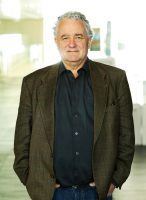
His facet as a communicator and scientific columnist in various media – including his collaborations in MÈTODE – was one of the most outstanding activities in Jorge Wagensberg’s professional career. With his writings, he went beyond pure news and opened the debate on issues that he was worried about, such as global environmental crises, ethical debates around scientific achievements, or animal rights. / Tusquet Editors
Writer and master of aphorisms
His great intellectual inquisitiveness led him to work in many projects and fields. One of them was the edition of books. In 1983, he started the collection «Metatemas» for the publisher Tusquets, with over 120 published titles. It is no exaggeration to say that «Metatemas» has become the most important collection of books on scientific thinking in Spanish. We only have to look at the list of authors: Richard Feynman, Lynn Margulis, James Watson, Francis Crick, Murray Gell-Mann, Konrad Lorenz, or Jean-Marc Lévy-Leblond, among many others.
Wagensberg also devoted himself to writing essays and books of aphorisms. As for the essays, his most successful works were La rebelión de las formas (the rebellion of forms, 2004), which sold 12,000 copies, and El gozo intelectual (the intellectual joy, 2007), with 8,000. But undoubtedly, books about aphorisms have been his most original and celebrated contributions. He defined the aphorism as a linguistic receptacle that evokes the most with the minimum. A minimal expression of the maximum behaviour, as some examples of his aphorisms show: «The greatness of science lies in the fact that it can understand without the need to intuit»; «The greatness of art lies in the fact that it is able to understand without needing to intuit»; «Were it not for crises, we all would continue to be bacteria». Wagensberg’s most successful aphorism books are Si la naturaleza es la respuesta, ¿cuál era la pregunta? (if nature is the answer, what was the question?, 2002), with 25,000 copies sold, and A más cómo, menos por qué (the more how, the less why, 2006), with 10,000.
And what kind of aphorisms did he write about death?: «Death is the most surprising of all the predictable news» or «One completely dies when the last person who knew you alive dies».
Afterword
Jorge Wagensberg felt as an alien – an intruder – in a world that has lost the taste for slow and reasoned conversation. A society in which humans, trapped by fear of the future, uncertainty and volatility, too often renounce to become what we are. Wagensberg chose to live the life he wanted. He wore several hats and did not resign to being the person that, with his lights and shadows, he was.

